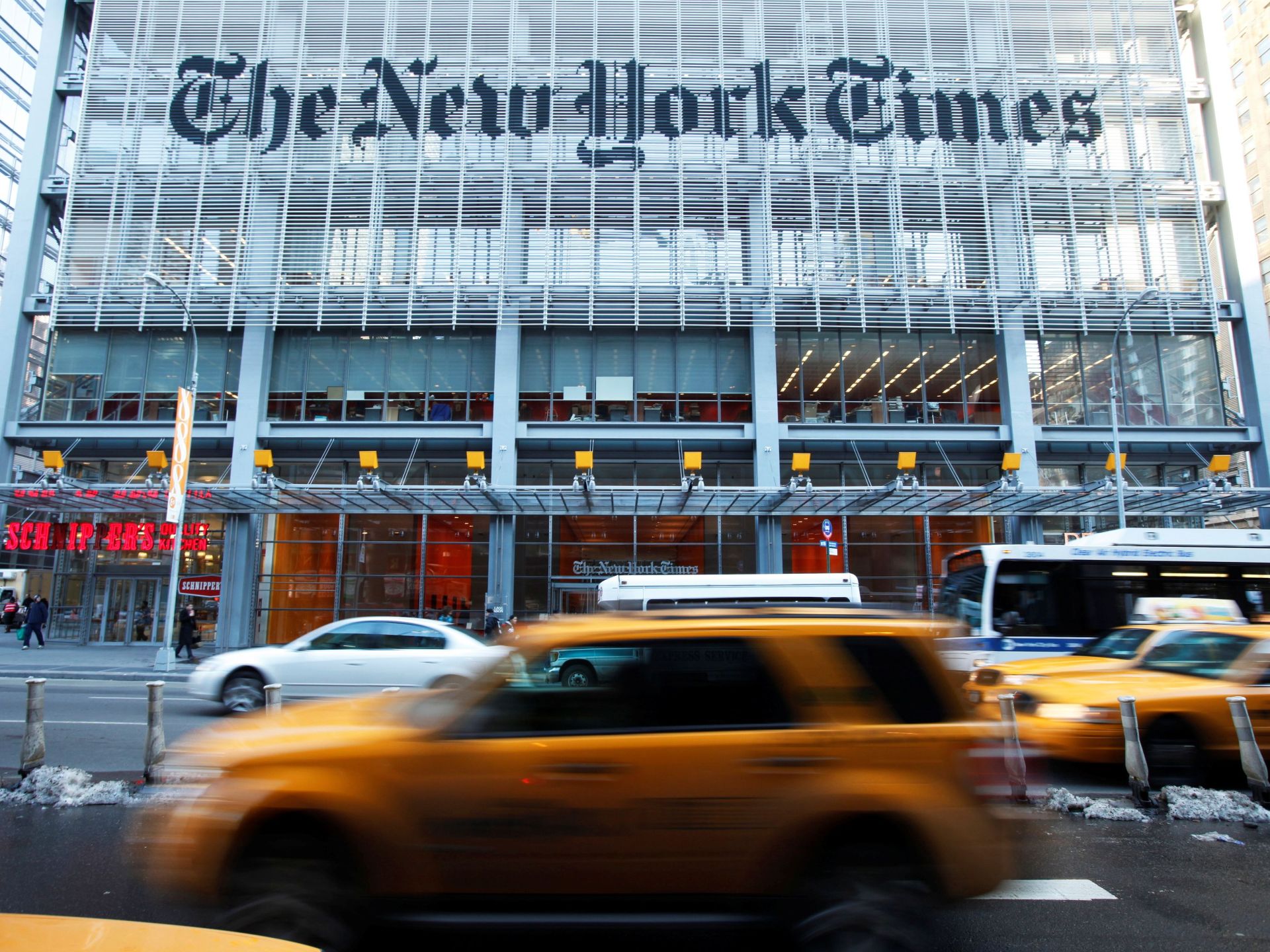The battle for the future of objectivity
Last month, more than 1,200 New York Times contributors and 34,000 readers and media workers signed an open letter to the newspaper expressing concern over its coverage of trans, non-binary and gender-nonconforming people.
Predictably, the Times denied all allegations of bias, saying its coverage “strives to explore, interrogate and reflect the experiences, ideas and debates in society”. But those who believe the Times’s coverage of trans lives is not just biased but also downright dangerous point to legal motions in several US states in support of anti-trans legislation that cite the newspaper’s reporting and pieces on its opinion and editorial pages.
The dangers posed by the Times’s coverage are both horrifying and horrifyingly predictable. They are the inescapable outcome of enshrining “objectivity” as a guiding principle in United States media, creating an environment where telling “all sides” of the story can harm precisely those people whose stories we seek to tell.
To understand how we got here, it’s helpful to go back in time to unpack the origins of the idea that still guides not only US media but also US culture at large. Before the 19th century, objectivity was defined by its root word, “object”. If it was in the external world, something that could be touched, smelled or seen by more than one person, it was automatically deemed objective, a thing as true as it was tangible.
The scientific revolution and the invention of machines like the camera, X-ray and voice recorder in the 19th century added another layer to this notion. In their wake, objectivity had more to do with our capacity to put aside personal feelings, attitudes and bias in perceiving things, including people, facts and ideas.
But the concept’s original meaning persisted in this newest iteration, for machines – objects – performed detachment better than humans ever could. The camera, for example, and its processes of light capture and convergence were hailed for eliminating the error and bias that plagued human renderings of any scene. The same was believed for the voice recorder, the X-ray and many subsequent inventions all the way up to today when algorithms are seen as both more accurate and neutral than humans.
Then and now, we value objectivity primarily as a way to overcome our emotions, our flaws – our humanness. From this fundamental fear of ourselves and our fallibility was born the idea of journalistic objectivity, which encourages a pretence of “machine-like” accuracy and detachment in journalists. In practice, this often takes the form of nonpartisanship, “telling all sides” of a story and avoiding overly close relationships with sources.
At first glance, these principles seem to make sense, allowing readers to draw their own judgements after digesting all the relevant facts. Yet these “objective” principles often mask deeply subjective trade-offs.
In a world of limited resources and attention spans, editors and journalists still have to make choices about the stories they cover, whom they interview, the questions they ask, how they frame the events they report on, which information and characters are amplified and which are minimised. And in the US, where newsrooms continue to be predominantly white, the stories seen as “objective” are often those geared to white sensibilities.
That is why, in general, minorities – be they defined by race, sexual orientation or gender identity – are rarely covered with the same depth, nuance or care as the majority. Instead, in our quest for objectivity, media all too often fall back on the tropes that a white, cisgender, heterosexual audience expects: poor Brown people, angry Black people, sexually confused teens, the Indigenous living in harmony with nature and so on. More than we like to admit, objectivity translates to laziness – both by the media and by its audience.
Objectivity’s many failures start to seem inevitable the more one unravels the concept’s history. The story I recounted earlier of its evolution as linked to the invention of certain machines is only half its real history, which is also linked to bias and fear – of ourselves and each other.
German philosopher Immanuel Kant, for example, who was the first to formulate objectivity and subjectivity in opposition to each other, also used these ideas to advocate for a racial hierarchy that placed “the Negro … lazy, soft and trifling” at the bottom.
In recent years, the camera, hailed for its ability to perfectly reproduce reality, has been revealed to be as subjective as the mind that operates it.
“A photograph is not necessarily a lie,” critic John Berger wrote, “but it isn’t the truth either. It’s more like a fleeting, subjective impression.” This impression depends on the subject’s relationship to the photographer and to that moment in time. It depends on light, editing and composition. It depends on what’s included and what’s left out of the frame, never to be seen.
Consider, for example, the photographs of National Geographic. In 2018, the magazine asked scholar John Edwin Mason to dive into its 130 years of coverage and investigate its track record of race representation. Mason found that the magazine’s “photography, like the articles, didn’t simply emphasize difference, but … put difference into a hierarchy” with Westerners and white people at the top.
This kind of reckoning is as rare as it is needed in our media institutions, especially those in the US. Media studies have found that across Europe, the Middle East, East Africa and South Asia, “objectivity” is not a major characteristic of media institutions, meaning US obsession with it is as culturally specific as the Super Bowl or Fourth of July celebrations. It also means that if objectivity has outlived its usefulness – or if its dangers outweigh its utility – we can and should look elsewhere for alternatives to take its place.
Today, most media in Europe and the Global South have adopted a style of “contextual”, “analytical” or “interpretive” journalism, which asks journalists to weigh in with their professionally grounded but nuanced opinions about what exactly is true and why.
American journalist Wesley Lowery’s idea of “moral clarity” is also promising, demanding that sources offering misinformation or biased opinions are clearly labelled as such and that media leaders deeply reflect on who is offered the platform of an opinion piece or editorial, which doesn’t have the guard rail of a reporter’s follow-up questions.
Moral clarity also means media institutions hiring and empowering journalists from the communities they seek to cover instead of simply believing an “objective” reporter can tell the story of any and all communities.
Moral clarity, in other words, contends that truth is not the same as objectivity, which can skate by on being ahistorical, apolitical and context-agnostic. Compared with truth, objectivity is the easy way out, the trapdoor that whiteness and fear have set us up to fall into. It’s the present stripped of the past, a nation asleep to its own history – and a newspaper believing its coverage can “explore, interrogate and reflect” without also shaping the very reality it covers.
The views expressed in this article are the author’s own and do not necessarily reflect Al Jazeera’s editorial stance.




